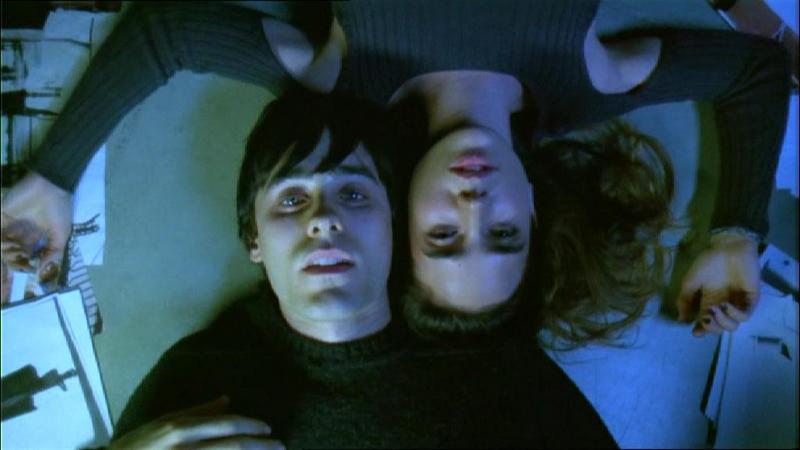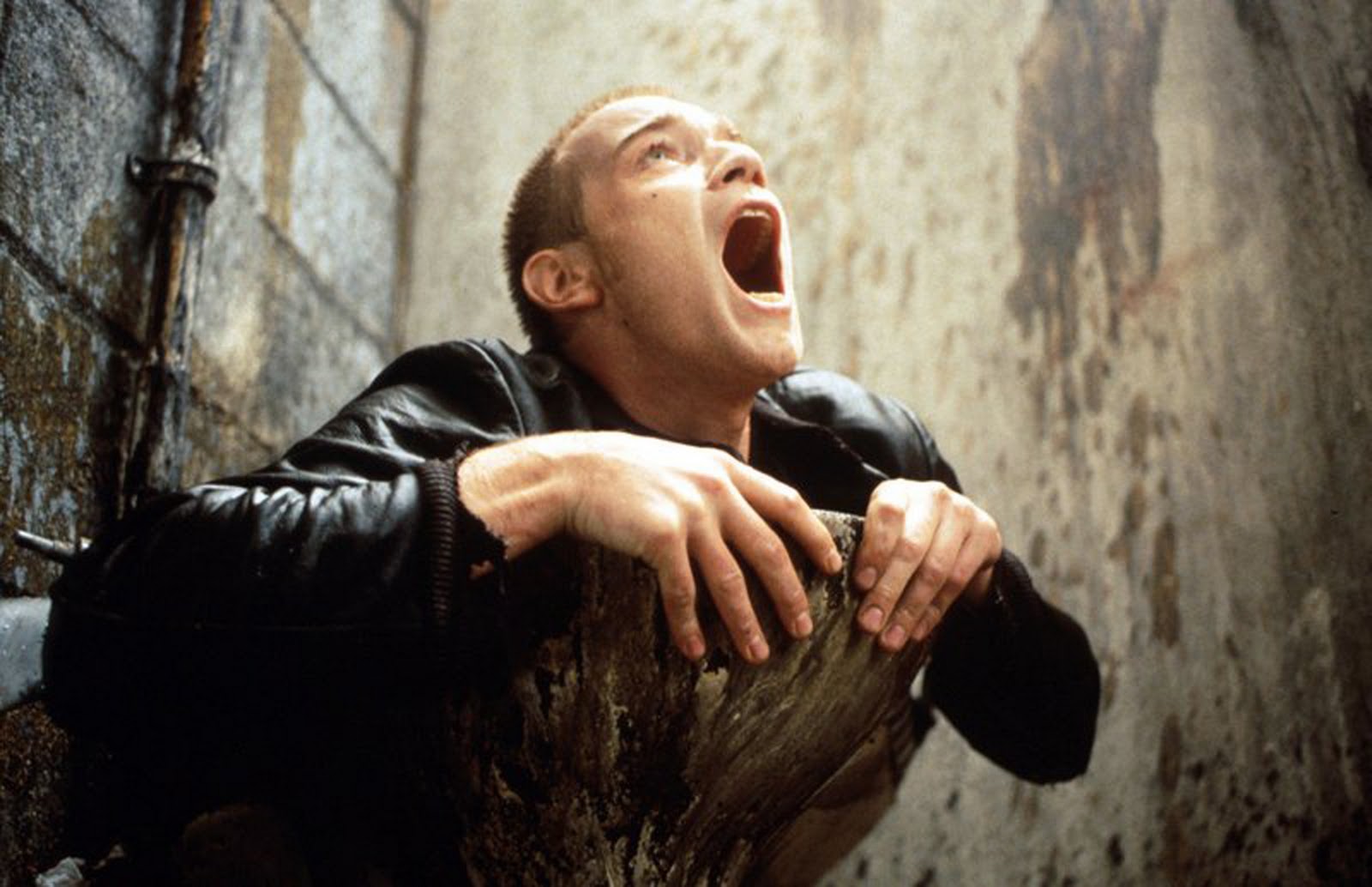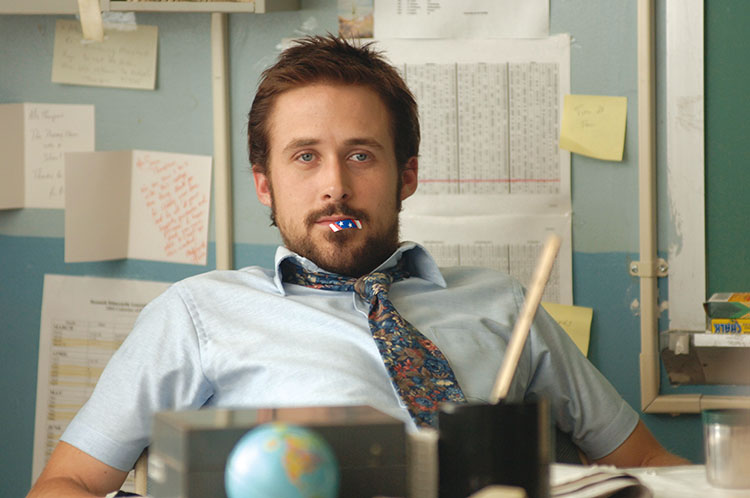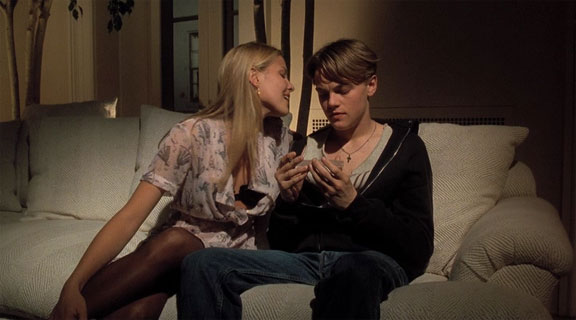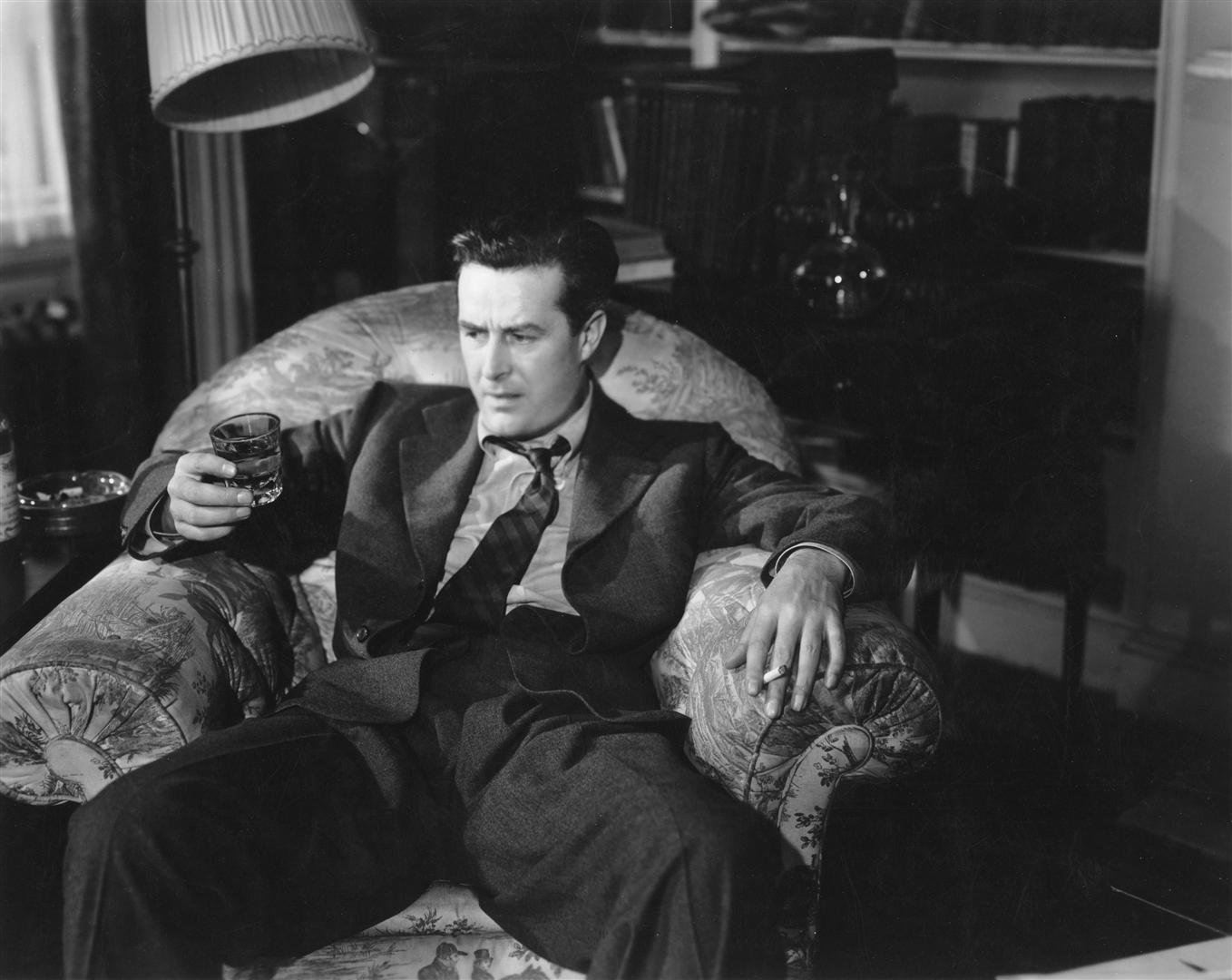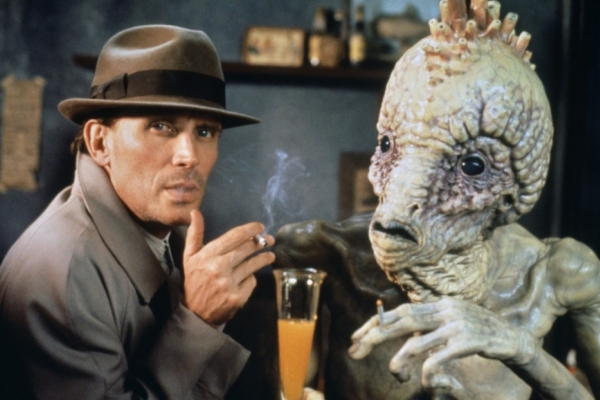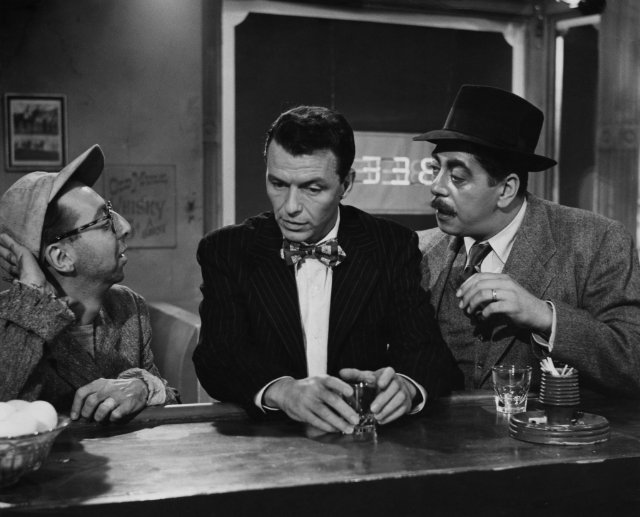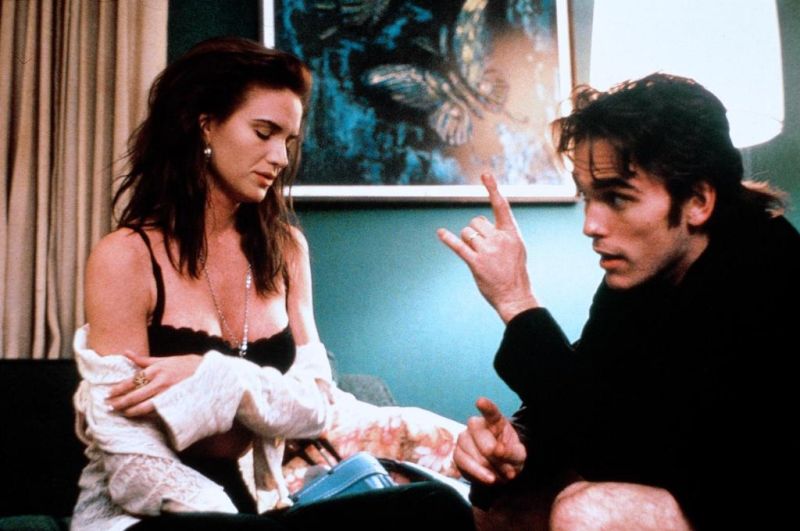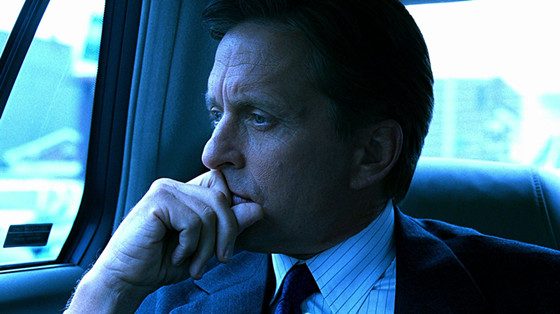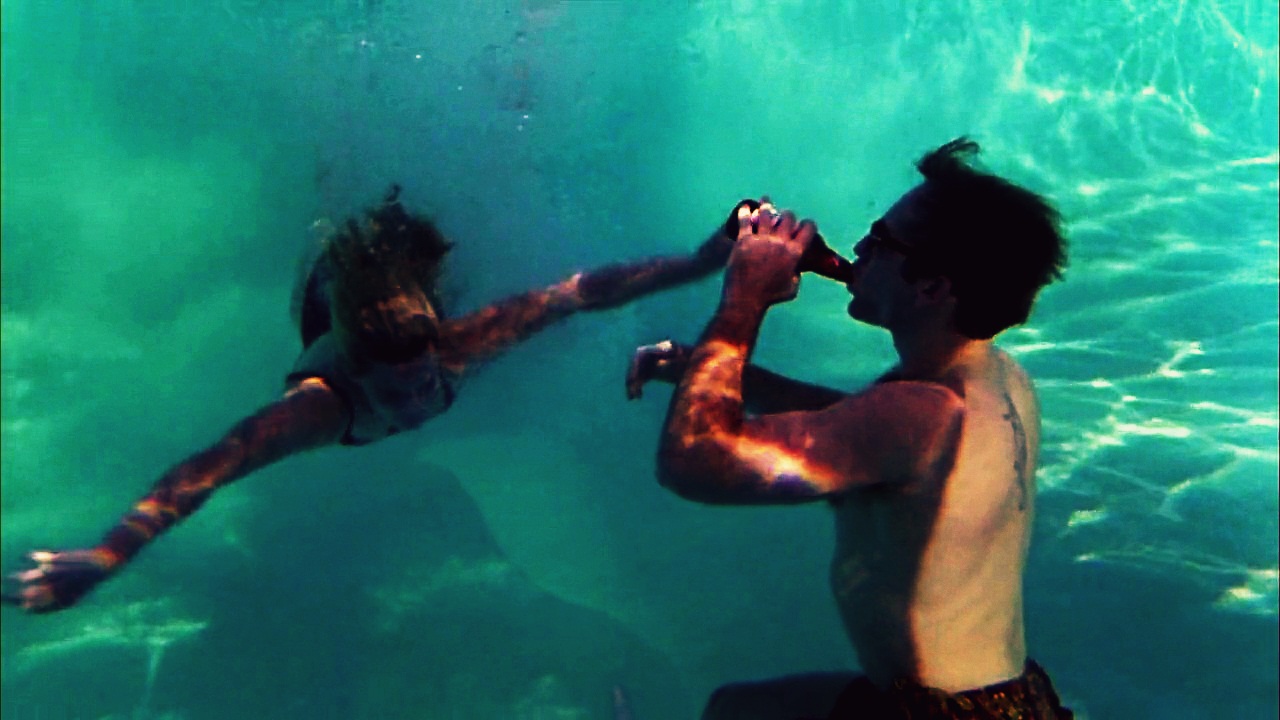
Is there any such thing as too much of a good thing? Yes. But that doesn’t stop most people and that’s fine enough. Everyone has some sort of compulsive behavior that makes them feel good, but may have adverse consequences in the future.
However, when are normal things like over-spending or overeating considered being a sort of disease? – When your whole life falls apart because of it. When it gets in the way of daily functioning by interrupting or ruining things like work, school, relationships, friendships, and health.
Most people assume that the only things you can get addicted to are drugs or alcohol which are intrinsically rewarding and therefore reinforce the behavior. But there are way more addictions and many adaptations of how addiction is portrayed in cinema. Whether it is the beginning of addiction or rehabilitation from it, or even how there is a whole economy based on addicts, there’s a movie of it.
1. Requiem For A Dream (2000)
Darren Aronofsky’s second feature after his extremely low-budget but critically successful “Pi” is a film that not only translates the desperation and the hopelessness that drugs lead to, but portrays the way that addiction sneaks into existence, without intent or any control.
Focusing on four main characters and outcomes, the root of this group is the gaunt and optimistic Harry (Jared Leto) who regularly guilt-trips his widowed, elderly mother Sara Goldfarb (Ellen Burstyn in her Oscar nominated role) for her television set which he frequently sells with his best friend Tyrone (Marlon Wayans) and which she always pays to buy back.
While Harry, Tyrone and Harry’s girlfriend Marion (Jennifer Connelly) are all already deep in their addiction to heroin and other drugs, Sara is innocently dependent on sugar and television. But once she gets a call inviting her to participate on a television game show, she becomes obsessed with losing weight so that she can wear the red dress her husband Seymour loved and starts taking weight-loss amphetamine .
Aronofsky uses extreme, tight close-ups and split screens that often have interfering movements that are present in each half. Both of these together with his signature long tracking shots emphasize that even when the characters are together in the same room, in the same bed, they are still ultimately alone. They may share the same addiction, the same desperate need, but each must deal with it single handedly.
Aronofsky focuses on the speed at which the drugs take effect, and how quickly they wear off through fast-cutting in his hip-hop montages that exaggerate sound effects and illustrate the transition from sobriety to intoxication. Together with his stylistic trademarks, he further dramatized each scene with his frequent collaborator Clint Mansell’s score that has been widely praised.
2. Trainspotting (1996)
Based on the popular novel by Irvine Welsh, the dark comedy-drama follows a group of heroin addicts who live in a deprived part of Edinburgh. The story is narrated by the desperate Renton (Ewan McGregor) who delivers his iconic “Choose Life” monologue as he and his simple-minded friend “Spud” (Ewan Bremner) are being chased by a security guard.
His other friends – the con-artist addict Sick Boy (Jonny Lee Miller), the clean, good-natured athlete Tommy (Kevin MckKidd) and the psychopathic Begbie (Robert Carlyle) who brags about his strong will against drugs, are his “support” system.
Renton decides to use the “Sick Boy Method” of cleaning himself up (despite the fact that Sick Boy’s method clearly doesn’t work because he’s still a drug-addict) and nails himself into a room with multiple cans of assorted canned soup, ice cream, milk of magnesia, water, Valium (which he stole from his mother – who he considers a socially acceptable drug-addict in her own right), a TV set and three buckets for urine, feces and vomit. However, the detox is short-lived.
The movie has been criticized for being pro-drug and has been defended as anti-drug, but whatever it is, what makes it unique is that it shows the bubble they live in – how everyone else who criticizes them for being weak and stupid is just ignorant of what heroin feels like. It depends on the understanding and sympathy between addicts rather than what clear-headed people preach. Renton and his friends know they are poisoning themselves and try stay straight, but drug-abuse is circular, not linear.
3. Half Nelson (2006)
Dan Dunne (Ryan Gosling) is a dedicated middle-school teacher who tries his best to make his class excited and eager to learn history by listening to their ideas and feedback and relating present events to those of the past. His teaching methods, while positive and interesting, ignore the district-approved syllabus which leads him into a bit of trouble.
While he’s nice and helpful with regards to his students, especially Drey (Shareeka Epps), he is often strung out and high from smoking, snorting, freebasing crack cocaine. But as he tells Drey after she finds him half-unconscious getting high on the locker room floor – “one thing doesn’t make a man” and that’s what this film is about.
It highlights the grey areas in a not-so-black-and-white world, where drug-addicts must steal and be bad – because Dan isn’t bad. He does behave recklessly at times and is incredibly flawed, but his intentions are good. He knows he can’t save a whole generation of kids by teaching them history, but tries to make a difference to at least one kid, because that’s all he needs.
Directed by Ryan Fleck and co-written with Anna Boden (in their first collaboration together), the feature film is actually based on a 19-minute short they did in 2004 titled “Gowanus, Brooklyn”.
The independent film is gritty, uncompromising and most importantly real. Ryan Gosling delivers a heartbreaking performance (which gained him an Oscar nomination) in his role as Dan and many feel that Shareeka Epps was snubbed and deserved an Oscar nod too for her portrayal of a girl who wants to follow in the footsteps of her convict brother by hanging out with his friends.
Emphasized by an Indie score by the Canadian band “Broken Social Scene” and punctuated by clips of students talking about important and revolutionary moments in American history, this film unpredictable and both optimistic and pessimistic at the same time. It feels no urgency to have clear, straight forward resolutions as most of these films do. It’s comfortable with subtlety.
4. The Basketball Diaries (1985)
Based on Jim Carroll’s 1978 memoir that became a cult classic, the movie casts the already Oscar nominated late teen Leonardo DiCaprio to portray the Catholic high school basketball star turned doped up heroin addict who would do anything for another hit.
Jim’s relatively minor deviances like sniffing paint and behaving badly in class swiftly move to snorting coke, breaking into a diner and turning tricks. His friends all serve as alternative lives he could have had – with one getting arrested, one staying clean and becoming a successful athlete, and one ending up even worse than he does.
While this movie is predictable and a typical abuse story with a decent protagonist who succumbs to peer pressure and becomes a strung out mess begging for money, it doesn’t change the anti-drug message effectiveness – especially since it is based on a true story – and does not lessen DiCaprio’s and Mark Wahlberg’s portrayals of juvenile junkies.
5. The Lost Weekend (1945)
Billy Wilder and his cowriter Charles Brackett introduced a different kind of drunkard on to the silver screen with their film noir drama film; one not limited to comic relief or slurred advice from a barstool. They instead focused on an intelligent, good looking and well-meaning everyman whose thirst grows as his life deteriorates in meaning.
Don Birnam (Ray Millard is his Oscar winning role) is a New York writer who is ready to lie, cheat, and steal to get his booze. Beginning on a Thursday, Don escapes a weekend trip with his brother and instead decides to stay in the city and soak up as much whisky as possible before his girlfriend Helen (Jane Wyman) discovers him.
Despite Helen’s attempts to help him get off this downward projector, her efforts are silenced by Don’s total disregard for her care and his compulsion to keep on drinking by whatever means necessary, even pawning his typewriter to raise funds for booze.
During production, Paramount was very anxious about the film’s adult theme and grim outlook, and so was the liquor industry, who offered Paramount $5 million to not release the film. Besides the concept of realistically portraying the degradation of alcoholism, Paramount was also uncertain about Milland’s casting since he was a popular matinee idol but not a serious, dramatic actor.
However, he proved himself by not only starting the tradition of losing weight to achieve the gaunt, addict look, but also checked himself into a hospital to experience the hysteria of a drunk ward.
Despite the initial testing of the film going badly, and agents telling Milland that he would be committing professional suicide, the film went on to be nominated for seven Academy Awards and won four (Best Picture, Best Director, Best Actor and Best Adapted Screenplay) as well as the highest award at the first Cannes Film Festival.
6. Naked Lunch (1991)
David Cronenberg’s metatextual adaptation of the William S. Burrough’s novel (together with some autobiographical accounts of his life) leads to a character pretty similar to Burroughs himself, and others who are resemble people he knew like Jack Kerouac and Allen Ginsberg.
The film opens with William Lee (Peter Weller), an exterminator whose wife (Judy Davis) is addicted his bug powder and steals it, resulting in him constantly having to refill his tank. William claims to have recovered from drugs, but his zombie personality, his flat, dead eyes and hallucinations seem to contradict that.
Due to the insecticide exposure, he becomes deluded and believes that he is an undercover, secret agent with two handlers in the forms of a talking insectoid typewriter and an alien who assign him the task of killing his wife, Joan. The film is Cronenberg’s first venture into something outside horror; although that does not mean that he limits his organically decaying aesthetic trademark.
The hallucinogens lead to absurd scenes and the abuse of bug powder leads to loads of roaches and insects living free and infiltrating the screen. The stone-cold, detached stare of the William together with the weirdness of the entire script and situation, that all together seem to mirror real life, make the film compelling and strange but one that nevertheless requires a certain taste.
7. The Man With The Golden Arm (1955)
Films should always be discussed in the context of which they were made, but maybe especially so for Otto Preminger’s films. The Motion Picture Association of America (MPAA) refused to certify this particular drama due to the central taboo subject of narcotics.
But that’s okay, because Preminger released it without their seal of approval anyway which created a domino effect that resulted in a change of production codes for the better – allowing more controversial topics like prostitution and abortion to be discussed in film.
Frank Sinatra stars as Frankie Machine, a heroin addict who is forced to become clean in prison but struggles to remain so once he is released back into reality.
His wife (Eleanor Parker) fakes her disability so as to ensure Frankie stays with her and hampers all his attempts to make something of himself. His former boss (Robert Strauss) wants him back dealing cards for an underground game and his former dealer (Darren McGavin) wants him hooked again. Only Molly (Kim Novak), an old flame and his neighbor seems to wish him well.
8. Drugstore Cowboy (1989)
Desperate people will do all sorts of bad things to get what they need. But good people can become desperate, and that’s what Gus Van Sant’s second feature is grounded on – moral people doing immoral things. Focusing on a strung out, drugstore-robbing pack of twenty-something-year-old friends headed by Bob (Matt Dillon), they drift between places on their never ending search for drugs, primarily prescription ones, although they’re not too picky.
Each member is an integral part of the smooth running, planned out pharmacy heist, although they often argue about who worked the most to see who could get most of the prize, whether it’s the distraction (Heather Graham and James Le Gros), or the getaway driver (Kerry Lynch) or Bob who actually hops over the counter to take whatever he can pop or sell.
But things become out of control, as they tend to when you’re severely high and eager to pull another job, and Bob tries his best to become sober and clean. This change removes him as the pack leader as he attempts to detach himself from his weakness and become a good person who doesn’t do bad things.
9. Traffic (2000)
More of a political crime drama than an addiction one, Steven Soderbergh’s critically acclaimed “Traffic” focuses on the profit from addiction through multiple perspectives in illegal drug trading. With an ensemble cast including Michael Douglas, Benicio Del Toro, Catherine Zeta-Jones, Amy Irving, Albert Finney and Don Cheadle, the story is stretched over three main, parallel but occasionally linking storylines.
Soderbergh traces the supply chain from a trafficker to an enforcer until it reaches a user, along with all the contributing inputs from the DEA, the police and the politicians. The characters illustrate how the cooperation between Mexico and the U.S is crumbling due to lies and greed. However, besides the political value of this movie, of which it has plenty, it does not fail to depict the consequences of addiction first-hand.
The key performance in this drama is by Michael Douglas who portrays a conservative Ohio judge, Wakefield, who is newly appointed as the head of the President’s Office of National Drug Control Policy.
However, despite his valid opinions and suggestions, everyone tells him that the War On Drugs is futile. Unknown to him, his daughter (Christensen) has been falling down the rabbit hole of cocaine, methamphetamines and heroin with the help of her boyfriend (Topher Grace) who introduces all of it to her.
10. Nymphomaniac (2013)
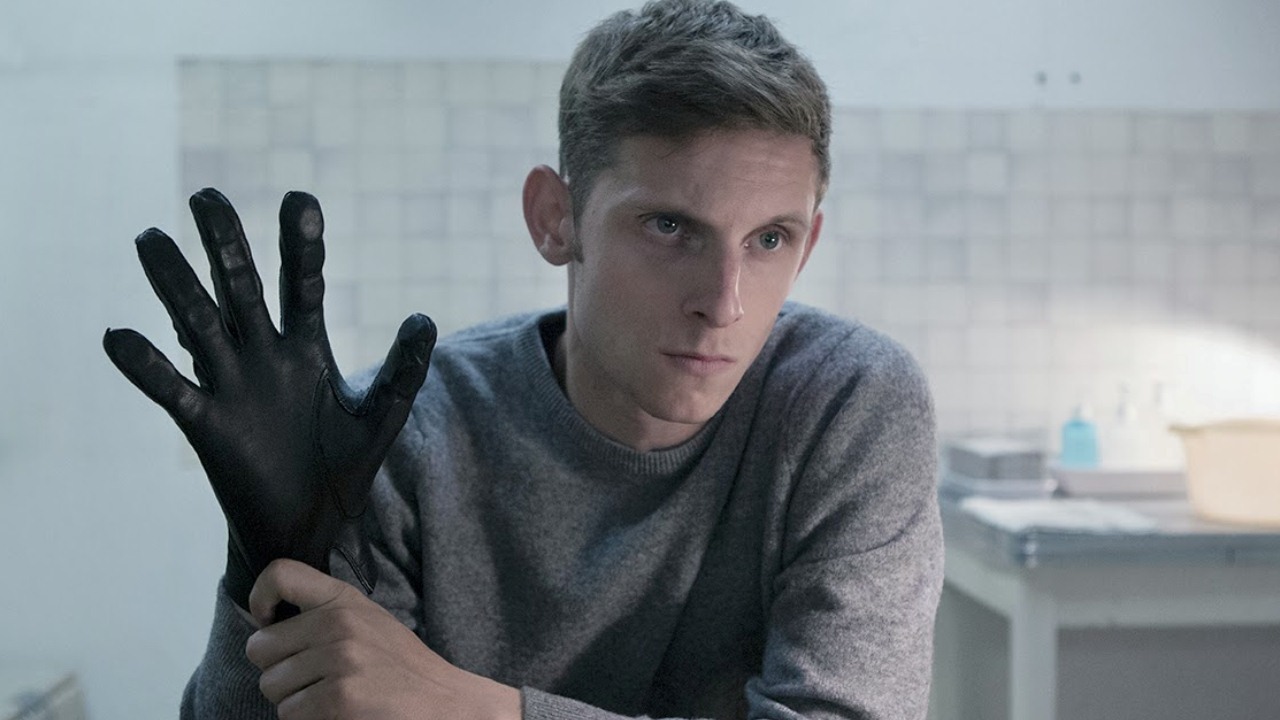
This controversial Lars von Trier two-part drama art film recounts events from the self-diagnosed nymphomaniac Joe (Charlotte Gainsbourg) as she narrates them to Seligman (Stellan Skarsgård), a stranger who finds her beaten up and unconscious next to his apartment.
Beginning with her childhood fascination with sex to her urgent need to lose her virginity to anyone – anyone being the overly casual and careless Jerôme (Shia LaBeouf), Joe makes it a point to discover a way to remove sex from society’s perception of love.
After, maybe due to her disappointment with Jerôme, or curiosity about her sexual powers over men, she becomes increasingly promiscuous and careless as she tries to sleep with as many men as possible on a train in effort to win a bag of sweets and win a competition with her friend.
This four hour film which is halved into two volumes is further subdivided into titled-sections, each with their own timeline, subject and style that is sometimes grittily realistic and others incredibly metaphorical. The overeducated Seligman often pauses the story and brings it back to the present in order to ask a question or to analyze her life in relation to some book he read or an object he holds dear.
However, he never seems to judge or be shocked at her affairs and horrifying deeds, rather only the mature Joe hates the things she has done and the lives she has ruined in her efforts to have constant meaningless sex. Her addiction becomes dangerous not only to the families of her lovers, or her own family, but mostly to herself.
